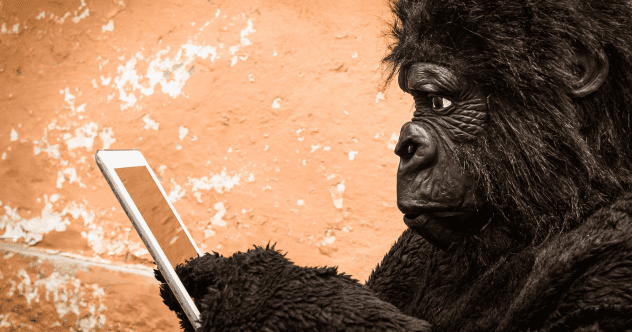In the diverse animal kingdom, fascinating creatures mirror our own behaviors. From oceans to skies, animals display traits strikingly similar to humans.
Join us as we explore ten animals exhibiting surprisingly human-like behaviors, uncovering intricate connections between species.
The Social Dolphin
Dolphins exhibit human-like behaviors with intelligence and complex social structures, astonishing researchers and captivating the public.
Communication is key. Dolphins use clicks, whistles, and body language to convey information, forming vocalizations akin to language. Empathy is also present, with dolphins aiding injured individuals, showing altruism like human caregiving.
Social bonds are crucial for both dolphins and humans. Dolphins showcase strong relationships within pods, cooperating in hunting, playing, and protecting one another, echoing human family units.
Dolphins’ problem-solving mirrors human intelligence, employing strategies to find food and navigate, using tools like seaweed to protect snouts while foraging. This tool use is traditionally linked to human cognitive skills.
The Communicative Great Ape
Great apes, our closest relatives, possess astonishingly human-like behaviors. Chimpanzees, bonobos, gorillas, and orangutans exhibit characteristics closely resembling our own.
Like humans, great apes use intricate gestures, vocalizations, and expressions to convey emotions and intentions. They form complex social structures, groom for bonding, and display empathy.
Tool use is another similarity. Great apes fashion and employ tools to solve problems, find food, and modify surroundings, showcasing cognitive abilities and bridging the gap between species.
These creatures display culture, where behaviors and traditions pass down through generations, highlighting sophisticated learning mechanisms similar to human ancestral learning.
The Nurturing Elephant
Elephants exhibit behaviors that resonate with humans. Their complex social structures, strong family bonds, and emotional depth reveal surprising parallels.
Empathy lies at the heart of these similarities. Elephants console distressed members with gentle trunk touches. Their mourning rituals mirror human grieving and remembrance.
Elephants connect and cooperate effectively, employing vocalizations and body language to convey messages. They demonstrate problem-solving skills and tool use, showcasing intelligence.
One endearing trait is their nurturing nature. Mothers exhibit dedication towards offspring, guiding and protecting them. Strong family bonds within the herd mirror human close-knit societies.
The Talkative Raven
Ravens captivate with their intelligence and behavior. They exhibit human-like traits, challenging what separates us from the animal kingdom.
One striking characteristic is their complex social structure. They form tight-knit communities and exhibit cooperative behaviors reminiscent of human societies. Ravens form lasting partnerships, engaging in playful activities with mates, reflecting familial bonds.
Ravens communicate beyond simple vocalizations, using calls with distinct meanings to convey messages and warnings. They can communicate about past events, a cognitive feat usually associated with humans.
The Problem-Solving Octopus
Octopuses amaze with their human-like behaviors. Despite being invertebrates, these cephalopods exhibit traits resembling human actions.
One similarity is their problem-solving ability. Octopuses demonstrate ingenuity when solving puzzles, using arms to manipulate objects. They display learning and memory capacity, recalling experiences to adapt to challenges.
Another trait is playfulness. Octopuses engage in playful activities, such as squirting water, suggesting complex emotions beyond survival instincts.
Furthermore, octopuses exhibit social behaviors reminiscent of human interactions. They communicate through skin color and patterns, indicating social signals, and display aggression similar to certain human behaviors.
Octopuses have shown remarkable ability to escape enclosures, indicating a curiosity and desire for freedom akin to human nature.
The Efficient Bee
Bees exhibit human-like behaviors showcasing intricate social structures and intelligence. They’ve evolved communication, organization, and decision-making mirroring human societies.
Bees demonstrate information exchange through their “waggle dance.” Worker bees use this dance to convey information about food location to hive mates, similar to humans sharing directions.
Moreover, bees showcase a division of labor within colonies, reminiscent of human teamwork. Worker bees specialize in tasks, ensuring the colony’s smooth functioning.
Bees display collective decision-making when selecting hive locations. Swarm intelligence guides their decisions, with scouts exploring potential sites and performing “dance-offs” to sway opinions.
The Empathetic Dog
Dogs, man’s best friend, exhibit behaviors similar to humans. Their ability to display emotions, empathy, and social intelligence is amazing.
One behavior is their capacity to experience emotions like joy, fear, sadness, and jealousy, showing emotional complexity. Dogs form strong bonds with caregivers and other animals.
Dogs showcase empathy, sensing when owners feel down and offering comfort, acting as support during difficult times.
Another trait is social intelligence. They understand social hierarchies and interpret body language, communicating effectively with humans and animals.
The Vocal Parrot
Parrots fascinate with their plumage and vocal abilities. Beyond mimicry, these birds exhibit behaviors mirroring human traits, captivating scientists and owners. They form bonds with caregivers, displaying loyalty and empathy.
In captivity, parrots engage in play like humans, solving puzzles and dancing to music. They possess a capacity for learning and comprehending concepts.
Parrots can communicate through language. These birds mimic human speech and tone, associating words with context, understanding language for communication.
The Romantic Penguin
Penguins captivate with comical waddles and human-like behaviors. Despite harsh environments, they exhibit social interactions and family dynamics resembling our own.
One resemblance is their camaraderie. Penguins form tight-knit communities, huddling together for warmth, resembling human families providing care.
Penguins are devoted parents, displaying nurturing behaviors towards offspring. Both parents incubate eggs, with males enduring long periods without food while females hunt.
Penguins exhibit courtship rituals that rival human romance. They engage in displays, vocalizations, and gift-giving to attract mates.
The Laborious Ant
Ants demonstrate complex social structures and communication, showcasing abilities similar to humans. One resemblance is social organization. Ant colonies are societies with roles for each member.
Communication is another similarity. Using pheromones, ants communicate with each other, guiding workers to food. This resembles a form of language.
Ants showcase teamwork, collaborating to overcome obstacles and forming bridges to tackle challenges, demonstrating their problem-solving abilities.
Furthermore, ants exhibit altruistic behaviors, sacrificing lives for the colony, echoing compassion observed in human societies.
From dolphins’ communication to ants’ social structures, the animal kingdom is full of behaviors echoing our own. These connections remind us of the intricate web of life we share.
What animal behavior surprises you the most? Leave your comment below!










